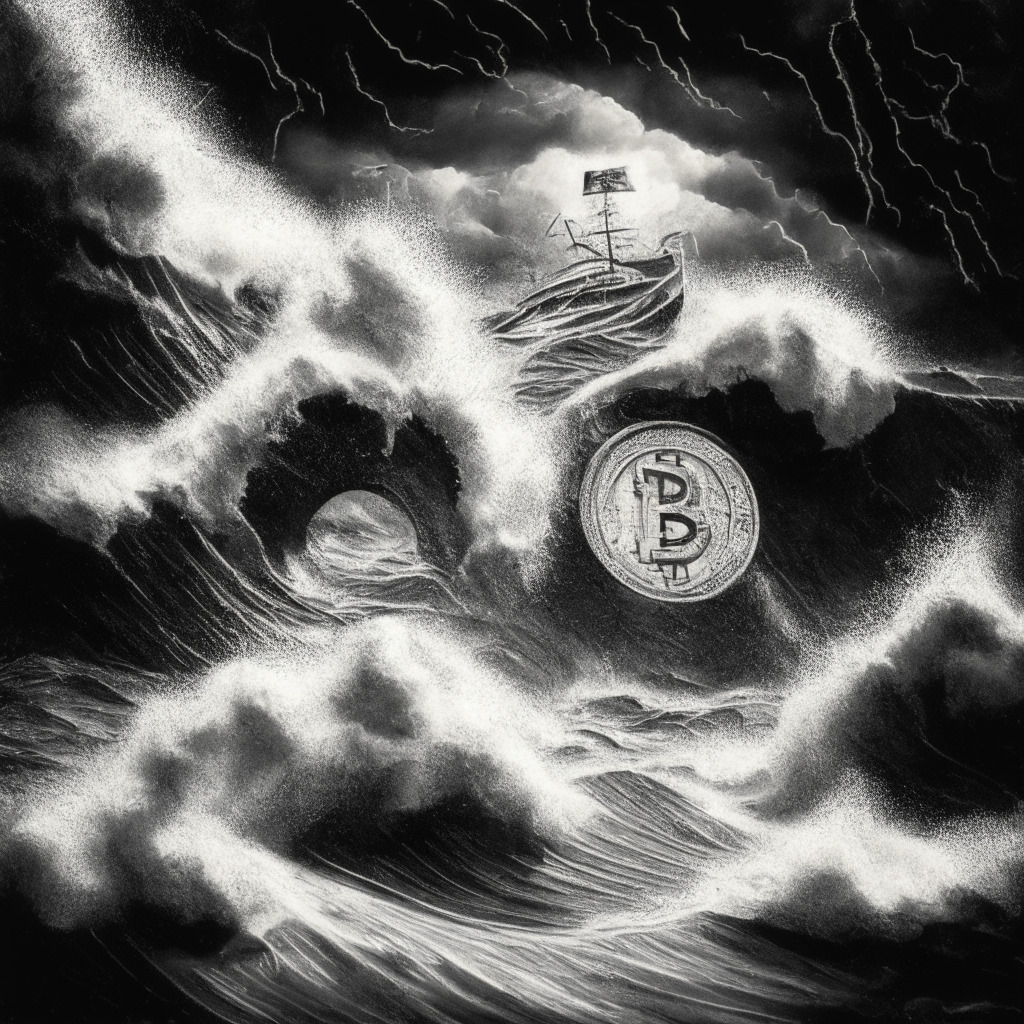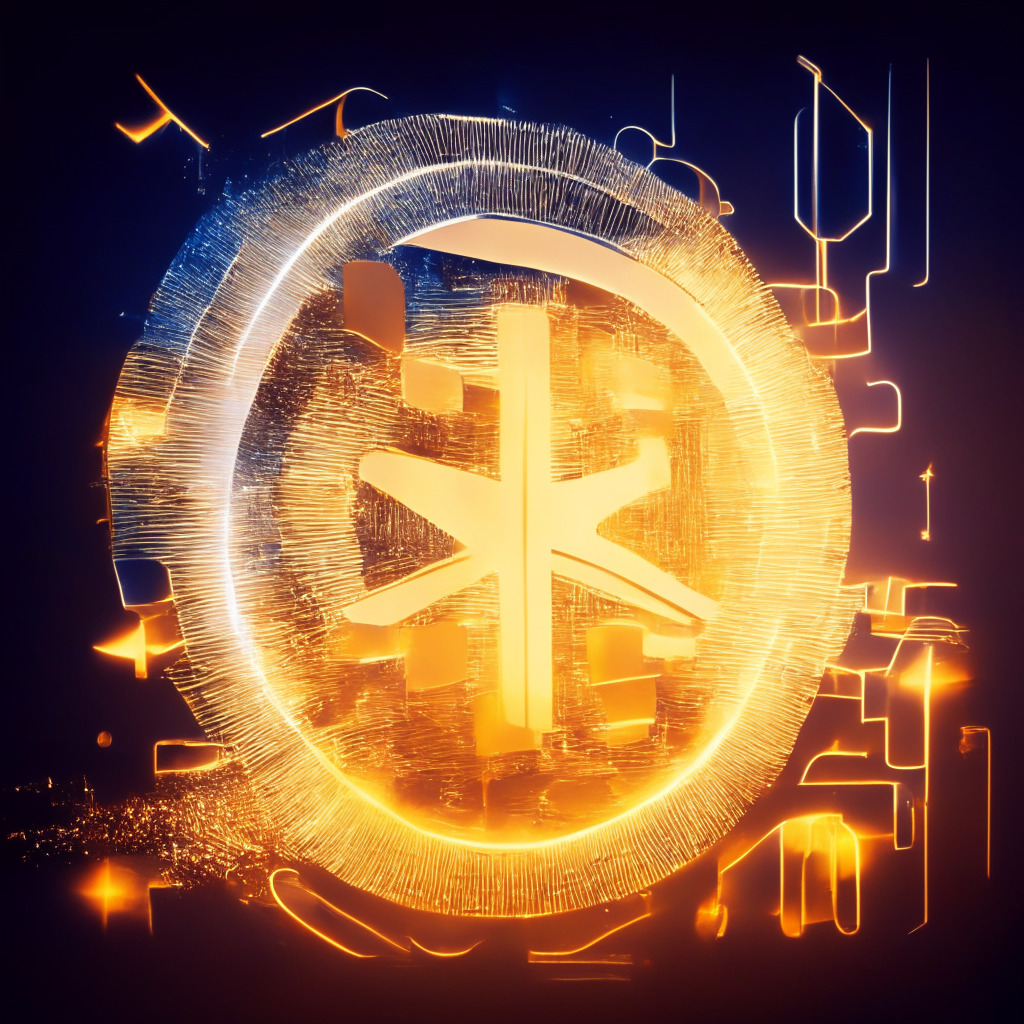“PayPal’s recent patent application for a non-fungible token (NFT) purchase and transfer system boldy underscores the mainstream acceptance of blockchain technology. The filing suggests designs to leverage NFTs for tokenization, far beyond digital collectibles. However, it also proposes off-chain transactions potentially diverging from the philosophy of complete decentralization that attracted enthusiasts to blockchain technology.”
Search Results for: Ledger
Decoding Blockchain: A Paradigm Shift or Pandora’s Box?
“In the digital finance world, the concept of blockchain technology, offering decentralized digital ledgers, is gaining significant attention. With possibilities extending beyond finance into areas like voting systems and digital identification, blockchain presents potential advantages. However, its volatile nature, security challenges, and regulatory absence present equal risks, prompting the question – are we ready for this double-edged sword?”
Navigating the Crypto Landscape in Dubai: A Guide to Buying Bitcoin and Understanding Risks
Dubai is rapidly embracing digital revolution, proving its support for the expanding crypto market, offering access to many exchanges and a tax-free structure for crypto trades. Although cryptocurrencies aren’t recognized as legal tender, no law prevents purchasing, owning, or trading them, coupled with some level of regulation for investor protection. However, the volatility and risks inherent in the digital currency world call for cautious investment behavior.
XRP’s Resurgence and the Rising Star of Wall Street Memes (WSM) in Cryptocurrency Landscape
XRP has secured its position as the fifth-largest cryptocurrency in terms of market cap, surpassing USDC. Despite slight volatility, XRP appears poised for future growth, with recent developments suggesting a potential surge. Ripple’s alliances with other entities further enhance this positive outlook.
Ripple’s Liquidity Hub Expansion: Impact on XRP Demand and Diversification Into BTCBSC
“Ripple Labs plans to extend its Liquidity Hub platform to Australia and Brazil. The Hub serves as Ripple’s digital asset liquidity management service, currently supporting BTC, ETH, LTC, ETC, BCH, USDT and USDC, but not XRP. This hints at wider XRP adoption globally and is seen as a positive indicator, despite ongoing litigation with the SEC.”
Swift’s CBDC Connector: Revolutionizing Digital Currency Interaction and Challenging Traditional Norms
Swift, the global financial messaging network, has partnered with three central banks to beta test a cross-border transaction solution for CBDCs. The focus is on interoperability between different digital currencies and current fiat-based systems. Swift’s CBDC innovations are designed to prevent digital islands and establish safe links between existing and future payment systems.
Rollercoaster Crypto Market: The Rise of USDC over XRP Amidst Turmoil
“The world’s second-largest US dollar-pegged stablecoin, USD Coin (USDC), recently surpassed the total market capitalization of XRP, a digital token powering the decentralized XRP Ledger, triggering interesting market dynamics. Amidst XRP’s continuous struggle amidst lawsuits and downturns, alternative coins backed by significant influencers, such as $WSM, offer promising diversification prospects.”
Deutsche Bank’s Foray into Crypto: Assured Safety or Regulatory Nightmare?
“Deutsche Bank has partnered with crypto safekeeping specialist, Taurus to establish digital asset custody and tokenization services. They have lodged for a crypto custody license from Germany’s financial regulator, indicative of digital asset custody plans for early 2021. This partnership signals the rising potential of tokenized financial assets.”
New Leadership at MobileCoin: Charting the Course for Global Expansion and Swift Crypto Transactions
MobileCoin’s CTO, Sara Drakeley, has been promoted to CEO to further the company’s goal of swift transnational payments. The company plans global expansion, focusing on regions with strong cryptocurrency usage like Africa and Latin America. New app Moby promises rapid transactions while maintaining user privacy.
Harnessing the Power of AI in Cryptocurrency: A Deep Dive into RNDR, Fetch.ai, and yPredict
“The blending of AI and cryptocurrencies like the Render Token and Fetch.ai projects leverage machine learning and blockchain technology, optimizing efficiency, and creating new opportunities. However, remember investing in crypto carries potential risk of capital loss.”
Komainu and Hidden Road Partnership: Elevating Trust in Crypto or Fueling Centralization?
“Institutional investors and partnerships may significantly inspire trust in the crypto industry. The recent alliance between Komainu and Hidden Road engages a secure, regulated custody platform, opening the digital asset marketplace to secure transactions and fostering industry growth and longevity.”
Feasibility of Central Bank Digital Currencies: Breaking Down the Findings of Project Sela
“Project Sela, a joint initiative led by BIS, and the central banks of Hong Kong and Israel, points to the feasibility of CBDCs settling on centralized ledgers while ensuring privacy. Addressing cost factors and potential risks, it put forth an efficient solution, ‘Access Enabler,’ that allows network settlement without merchants retaining users’ CBDC. This opens a promising pathway for digital currencies to potentially become a universally accepted retail payment form.”
Crypto Freedom Alliance: Paving the Way for Blockchain Regulations in Texas
Leading digital assets and blockchain companies, including Coinbase and Ledger, formed the Crypto Freedom Alliance of Texas to pave the way for tangible cryptocurrency regulations. The Alliance seeks to educate stakeholders, inspire technological advancement, promote crypto-friendly laws, and make Texas a significant hub for cryptocurrency mining.
Dissecting Project Sela: Orchestrating the Safe Future of Central Bank Digital Currencies
“Project Sela showcases the potential of central bank digital currencies (CBDCs), implementing a novel intermediary approach to reduce liquidity risk. Dealing with concerns about cybersecurity and privacy, it signals a future where transactions settle directly on the central bank’s ledger, inspiring global central banks’ digital transformation.”
NFTs Excluded from Major Insurance Cover: Cautionary Move or Regulatory Hiccup?
“CNA Insurance excludes non-fungible tokens (NFTs) from a $20-million trust policy, underlining the industry’s need for robust regulatory mechanisms in handling digital assets like NFTs. This evokes discussion on the balance between crypto-asset innovation and traditional regulation, marking a path toward stronger, safer regulatory structures for the crypto landscape.”
Expert Battle in FTX Founder’s Legal War: Implications on Future Cryptocurrency Regulation
“In the case involving FTX Founder Sam Bankman-Fried, the DOJ argues proposed defense witnesses lack necessary expertise. The defense’s proposed expert witnesses, however, cover a range of expertise, from data analytics to law and may challenge DOJ’s testimonies, if needed. The case raises questions about law enforcement’s future interference in cryptocurrency matters.”
Heavy Hitters Form Crypto Freedom Alliance in Texas: Pathway to Clearer Digital Asset Regulations
“The newly formed Crypto Freedom Alliance of Texas, comprising key crypto entities, aims to promote clear regulations for digital assets in Texas through education. The initiative emphasizes the challenges of legal jurisdiction for Decentralized Autonomous Organizations (DAOs) and advocates for crypto-friendly tax laws and reshaped banking regulations.”
Future of Blockchain: Unleashing Potential or Envisioning Pitfalls?
“Proponents of blockchain argue its security, transparency, and decentralization can revolutionize industries, and assert its potential is heightened by smart contracts. However, skeptics question scalability, high energy consumption, privacy implications, and complex technical knowledge. The future of blockchain lies in addressing these pitfalls, understanding its potential, and sound market operations.”
Navigating the Tightrope: Federal Oversight and the Future of Blockchain Technology
Vice Chairman of the Federal Reserve, Michael Barr, in a fintech event, emphasized the need for regulatory oversight in the swift adoption of blockchain technology. He discussed the basic research into Central Bank Digital Currency (CBDC), potential for stablecoin legislation, and the significance of balancing innovation with potential risks.
Revolutionizing the Freelance World with Cryptocurrencies: A Boon or a Bane?
Using cryptocurrencies for payments in the freelance industry overcomes significant obstacles imposed by traditional banks such as high transaction fees, poor conversion rates and slow processing times. Cryptocurrencies also provide freelancers with more control over their finances, enhanced transaction transparency, and improved account security.
Southeast Asian Super App Grab Launches Blockchain Wallet and NFT Vouchers: A Brave Step or Casual Ripple?
Southeast Asian super app Grab, in collaboration with the Monetary Authority of Singapore (MAS), is venturing into the realm of blockchain technology and non-fungible tokens (NFTs). They have unveiled a unique Polygon-based Web3 wallet and NFT vouchers, which serve as digital collectibles and can be used for various services across Singapore. While the project holds promise, questions about its feasibility and the security of these digital assets persist.
Revolutionizing Business: Blockchain, AI and the Imminent Threat to Conventional Industries
“AI and blockchain technologies are set to restructure established sectors and create new markets, driving economic growth through task automation and modernising payment systems. However, they also pose risks, and their benefits may take another decade to materialise. Also, the migration of NFTs indicates belief in Bitcoin’s promise, though Ethereum still dominates the NFT market.”
Navigating Polkadot 2.0: A Revolutionary Shift for Developer Attraction & DOT Token Economy
Polkadot’s innovative roadmap, Polkadot 2.0, aims to reimagine resource allocation to foster efficiency and inclusivity. It introduces ‘elastic cores’ for flexible computational capabilities and ensures coretime allocation aligns with developers’ evolving needs. Improved availability and budget-friendliness could potentially increase DOT tokens’ market value, while fees from coretime sales support Polkadot’s Treasury.
Revolutionizing Financial Markets with AI and Blockchain: A Double-Edged Sword?
“Blockchain and AI could revolutionize the financial markets, potentially lowering costs and modernizing payment systems. However, they demand upfront investment and may initially inflate IT expenses. Risks like tax evasion and money laundering must also be kept in check. Despite hurdles, the full potential of these technologies is still unfolding.”
Palau’s Hasty Retreat: Hanged Hopes or Valuable Lesson in Crypto Adoption?
Just a month after launching its U.S. dollar stablecoin, the Pacific nation of Palau has unexpectedly halted the project. The move has sparked curiosity as to why the project, which promised to reduce transaction costs and increase transfer speed for Palau citizens, was abruptly discontinued.
Decentralization Debate: Ethereum’s Layer 2 Solutions Face Security Fears
“Layer 2” solutions like Arbitrum, Optimism, and Coinbase’s Base offer alternatives to the Ethereum network by bundling transactions. But their reliance on a centralized “sequencer” introduces potential bottlenecks and regulatory scrutiny. While there are calls for decentralizing, experts argue that it might compromise security. The future of blockchain depends on efficient decentralization strategies, robust security and fraud prevention.
Exploring the Potential of RLN in Harmonizing CBDC with Commercial Bank Money
The Regulated Liability Network (RLN), a U.K. based financial marketplace infrastructure, is working on a use case involving the consumer domestic payment case with the central bank digital currency (CBDC). Exploring how commercial bank money and CBDC could coexist, the RLN aims to maintain equilibrium between the two. The network further mitigates authorized push payment fraud and quickens settlement time. Despite the complexity of regulations and jurisdictions, systems like RLN are key to a seamless digital economy transition.
Unpredictability Reigns: XRP’s Potential Rebound vs the Rising Tide of New Altcoins
“XRP’s performance this year shows a rise of 47%, backed by Ripple’s legal success with the SEC, suggesting potential further gains. Altcoin is perceived as undervalued and ready for a rebound, drawing investors’ attention. Meanwhile, Wall Street Memes (WSM) boasts a $25 million raise and a growingly potential investor community of over 268,000, highlighting the unpredictability of the cryptocurrency world.”
Digital Yuan to Dominate Retail Platforms: A Chance or Challenge for Crypto Evolution?
“The Bank of China declared retail platforms should offer digital yuan as a payment option. Commercial banks and payment platforms like WeChat and Alipay are urged to integrate Central Bank Digital Currency (CBDC) via QR codes. No specific technical details about integration or security measures have been provided. The move raises concerns about the future of other cryptocurrencies and their relationship with traditional banking systems.”
London Stock Exchange Paves Runway for Blockchain Integration, Sans Cryptocurrencies
The London Stock Exchange Group is preparing to integrate blockchain technology into its trading procedures for traditional financial assets. This follows a year of research into the feasibility of combining conventional markets with blockchain’s transparent infrastructure. However, the proposed system will exclude cryptocurrencies, focusing on using blockchain to increase efficiency.
Navigating FinTech’s Double-Edged Sword: Nexo’s Dual Mode Crypto Card’s Triumphs and Roadblocks
Nexo, in partnership with Mastercard, recently launched the first “Dual Mode Crypto Card”, providing crypto-based debit and credit services in the European Economic Area (EEA). It promises added user benefits but also faces regulatory challenges, exposing the delicate balance of crypto innovation and legal compliance.
IBM’s Insights on a Successful Digital Euro Implementation: A Comprehensive Approach
“IBM Consulting offers insights on the successful implementation of a digital euro, emphasizing simplicity for initial adoption, integrating payment intermediaries’ needs, standardizing APIs for seamless integration, and valuing blockchain’s significant benefits. Resilience, transparency, security, and regulatory clarity are the key concerns for an increasingly digital economy.”































